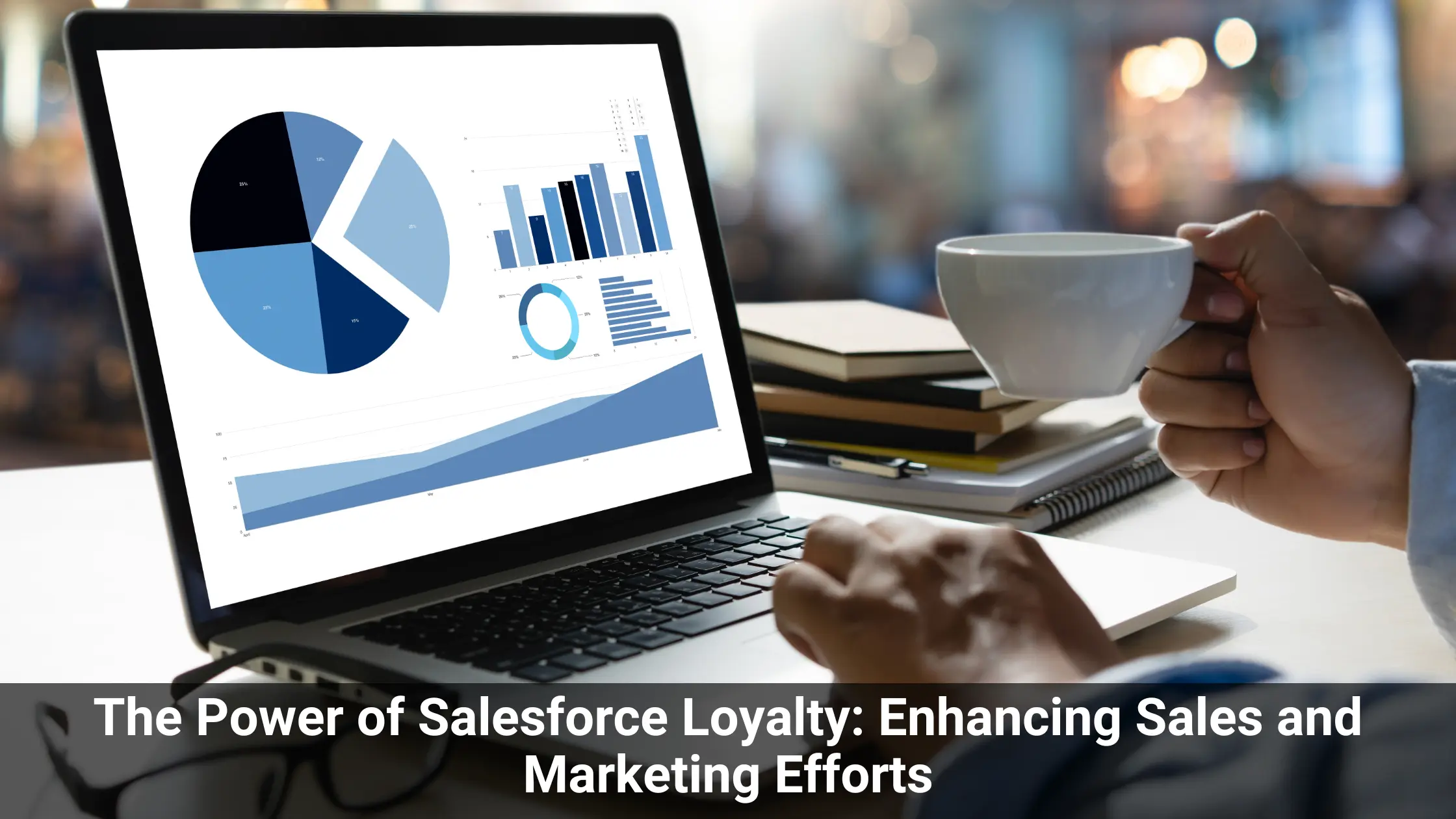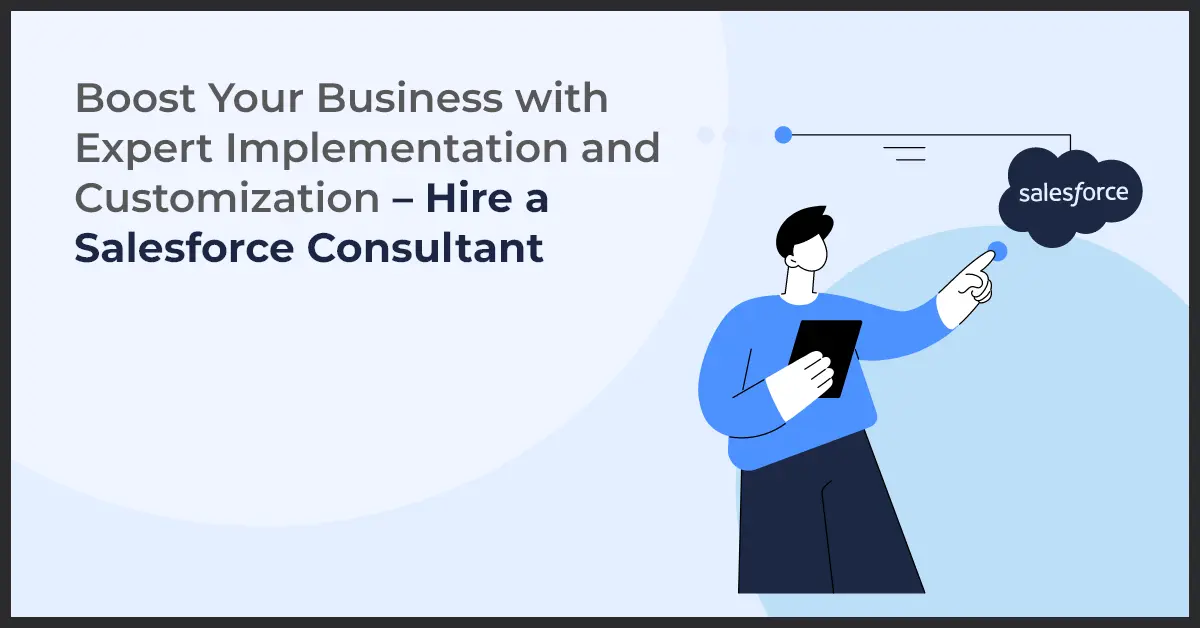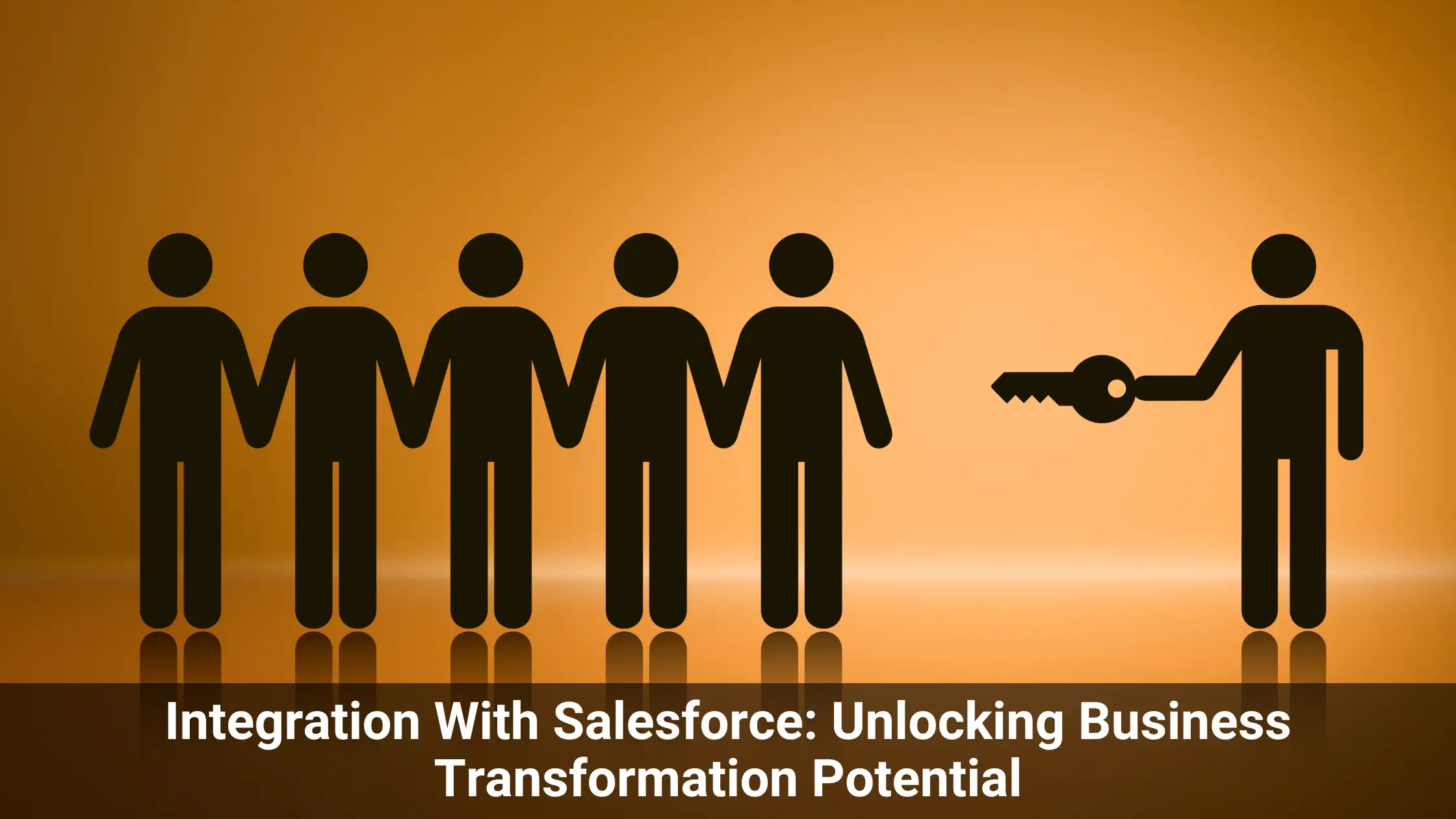Customer loyalty is the lifeblood of any successful business. In today's dynamic marketplace, organizations are constantly seeking ways to deepen their relationships with customers and foster repeat business. In this regard, Salesforce Loyalty stands out as a powerful tool for managing and nurturing customer loyalty.
Salesforce.com, the leading customer relationship management (CRM) platform, provides a comprehensive solution that helps businesses in effectively managing customer loyalty. With its robust suite of features and functionalities, Salesforce Loyalty enables companies to enhance their sales and marketing efforts by gaining a deep understanding of customer behavior, preferences, and engagement.
From building customer loyalty programs to analyzing data for personalized marketing campaigns, Salesforce Loyalty empowers businesses to create meaningful and mutually beneficial relationships with their customers. Let us explore the vast potential of Salesforce Loyalty and how it can revolutionize your sales and marketing strategies.
Understanding Salesforce CRM
Salesforce Customer Relationship Management (CRM) system is a comprehensive platform that helps businesses manage their customer relationships effectively. It provides a centralized database where businesses can store and organize customer information, interactions, and activities.
With Salesforce CRM, businesses can gain a holistic view of their customers, enabling them to understand their preferences, needs, and behavior. This understanding allows businesses to tailor their products, services, and marketing strategies to better serve their customers and build long-lasting relationships.
One of the key benefits of using Salesforce CRM for managing customer loyalty programs is its ability to track and analyze customer interactions and activities. It allows businesses to capture and store valuable customer data, such as purchase history, feedback, and engagement metrics.
- Improved Personalization: By leveraging the data stored in Salesforce CRM, businesses can personalize their interactions with customers, providing tailored offers, recommendations, and support.
- Targeted Marketing: Salesforce CRM enables businesses to segment their customer base and create targeted marketing campaigns. This ensures that the right messages reach the right customers at the right time.
- Streamlined Communication: With Salesforce CRM, businesses can easily communicate with their customers through various channels, including email, social media, and SMS. This streamlines communication and enhances customer engagement.
- Efficient Customer Service: Salesforce CRM provides businesses with tools for managing customer service inquiries, complaints, and requests. It helps businesses resolve customer issues quickly and efficiently, improving overall customer satisfaction.
Building a Successful Customer Loyalty Program
Creating a customer loyalty program is crucial for businesses looking to enhance customer satisfaction and drive repeat sales. With Salesforce, building a successful loyalty program has never been easier.
Factors to consider when designing a customer loyalty program
- Identify your target audience: Understanding who your loyal customers are and what motivates them is essential for designing a program that resonates with them.
- Set clear goals: Determine the objectives of your loyalty program, whether it's increasing customer retention, driving sales, or fostering brand advocacy.
- Offer valuable rewards: Provide incentives that align with your customers' interests and preferences, such as exclusive discounts, free products, or VIP perks.
- Establish a tiered structure: Implement different levels or tiers in your loyalty program to incentivize customers to reach higher levels and unlock more benefits.
- Ensure simplicity and ease of use: Keep the program easy to understand and navigate, avoiding complicated rules or redemption processes.
Best practices for implementing a customer loyalty program using Salesforce
When utilizing Salesforce for your customer loyalty program, there are some best practices to follow:
- Utilize Salesforce's customer segmentation capabilities to target specific customer groups with personalized loyalty offers.
- Integrate your loyalty program with Salesforce's CRM to gain valuable insights on customer behavior, preferences, and purchase history.
- Automate program workflows and communications using Salesforce's automation tools, ensuring timely rewards and engagement.
- Analyze loyalty program data using Salesforce's reporting and analytics features to measure program effectiveness and make data-driven improvements.
- Regularly communicate and engage with program members through personalized emails, in-app notifications, and social media to maintain their interest and foster loyalty.
Enhancing Customer Service with Salesforce
When it comes to providing exceptional customer service, Salesforce offers a range of features and capabilities that can greatly enhance customer experiences and satisfaction. By utilizing these features effectively, businesses can stay on top of customer interactions, resolve issues promptly, and build strong relationships with their customer base.
Utilizing Salesforce features to improve customer service experiences and satisfaction
Salesforce provides a variety of tools specifically designed to elevate customer service. One such tool is the Service Cloud, which empowers businesses to deliver efficient and personalized support across multiple channels, including phone, email, chat, and social media.
With the Service Cloud, customer service agents can easily access customer information and history, allowing them to provide personalized experiences based on past interactions. This not only enhances the efficiency of troubleshooting and issue resolution but also helps build trust and loyalty with customers.
Tips on using Salesforce to track and manage customer interactions effectively
Tracking and managing customer interactions is crucial for ensuring timely follow-ups and delivering seamless customer service. Salesforce offers a comprehensive solution through its case management system.
By creating cases for each customer interaction, businesses can easily track the status of each issue or inquiry. Additionally, agents can collaborate within the system, ensuring a smooth transfer of information and faster resolution times.
- Assign cases to specific agents or teams, streamlining the process and ensuring accountability.
- Set up automated notifications and escalations to avoid delays and ensure prompt responses.
- Use Salesforce's reporting and analytics tools to identify trends and areas for improvement in customer service.
By leveraging these features, businesses can optimize their customer service processes, leading to higher customer satisfaction and loyalty.
Measuring and Optimizing Salesforce Loyalty Programs
Measuring and optimizing Salesforce loyalty programs is crucial for ensuring their success and driving customer satisfaction and loyalty. By closely monitoring key metrics and utilizing data analysis techniques, businesses can continuously improve their loyalty programs and achieve better results.
Key metrics and KPIs for measuring the success of Salesforce loyalty programs
When it comes to measuring the success of Salesforce loyalty programs, businesses need to track several key metrics and KPIs. These metrics provide insights into the effectiveness and efficiency of the programs, enabling businesses to make data-driven decisions for optimization. Some of the key metrics and KPIs to consider include:
- Customer retention rate: This metric measures the percentage of customers who continue to stay loyal to the brand over a given period. A higher customer retention rate indicates the success of the loyalty program.
- Customer lifetime value (CLV): CLV measures the total value a customer brings to a business over their lifetime. By analyzing CLV, businesses can assess the impact of the loyalty program on customer spending and profitability.
- Redemption rate: The redemption rate measures the percentage of rewards or incentives offered through the loyalty program that customers actually redeem. A higher redemption rate signifies engagement and satisfaction among customers.
- Net Promoter Score (NPS): NPS measures the loyalty and advocacy of customers. By surveying customers and calculating the NPS, businesses can gauge the effectiveness of their loyalty programs in driving word-of-mouth referrals.
- Program participation rate: This metric measures the percentage of customers actively participating in the loyalty program. A higher participation rate indicates customer interest and engagement.
Techniques for optimizing Salesforce loyalty programs based on data analysis and insights
Optimizing Salesforce loyalty programs involves using data analysis techniques and insights to identify areas for improvement. By leveraging the data collected from customer interactions, businesses can make data-driven decisions and implement strategies to enhance the effectiveness of their loyalty programs. Some techniques for optimizing Salesforce loyalty programs include:
- Segmentation analysis: Analyzing customer data to identify different segments and their specific preferences and behaviors. This helps businesses tailor loyalty program offers and rewards to specific customer segments for maximum impact.
- A/B testing: Testing different variations of loyalty program features, messaging, or incentives to determine the most effective approach. By conducting controlled experiments, businesses can optimize loyalty programs based on data-driven insights.
- Personalization: Utilizing customer data to personalize the loyalty program experience. By offering personalized recommendations, rewards, and incentives, businesses can enhance customer engagement and loyalty.
- Feedback analysis: Regularly collecting and analyzing customer feedback to identify pain points or areas for improvement within the loyalty program. This helps businesses address customer concerns and optimize the program accordingly.
- Continuous monitoring and iteration: Constantly monitoring key metrics and KPIs, and using the insights gained to iterate and optimize the loyalty program. This ensures that the program remains relevant, effective, and aligned with customer expectations.
Integrating Salesforce Loyalty with Sales Performance Management
The synergy between Salesforce loyalty and sales performance management is undeniable. By integrating both approaches, businesses can drive better results in customer loyalty and sales performance.
When it comes to customer loyalty, Salesforce loyalty programs provide a robust platform for businesses to engage and reward their customers. These programs enable businesses to track customer behavior, identify loyal customers, and incentivize repeat purchases.
On the other hand, sales performance management focuses on optimizing the performance of the sales team. It involves setting clear goals, providing training and support, and measuring and evaluating sales performance.
Integrating Salesforce loyalty with sales performance management allows businesses to align their loyalty programs with their sales objectives. This integration can lead to several benefits:
- Improved customer satisfaction: By combining loyalty rewards with sales performance incentives, businesses can create a seamless customer experience that drives satisfaction and loyalty.
- Increased sales performance: By linking loyalty rewards to sales targets and performance metrics, businesses can motivate their sales team to achieve higher sales targets and drive revenue growth.
- Enhanced data insights: Integrating Salesforce loyalty with sales performance management provides businesses with comprehensive data on customer behavior, sales performance, and the effectiveness of loyalty programs. These insights can be used to fine-tune strategies and optimize results.
- Streamlined processes: By integrating Salesforce loyalty with sales performance management, businesses can streamline their processes and eliminate duplications. This integration enables seamless tracking of customer loyalty and sales performance in a single platform.
To successfully integrate Salesforce loyalty with sales performance management, businesses should:
- Set aligned goals and objectives: Clearly define how loyalty rewards will be tied to sales targets and performance metrics.
- Provide training and support: Ensure that the sales team understands how the loyalty program works and how it can benefit both the customers and themselves.
- Monitor and evaluate performance: Regularly measure and evaluate the performance of both the loyalty program and the sales team to identify areas for improvement and optimization.
- Continuously optimize and adapt: Use the insights from data analysis to refine both the loyalty program and the sales performance management approach.
By integrating Salesforce loyalty with sales performance management, businesses can create a powerful synergy that drives customer loyalty, enhances sales performance, and ultimately contributes to long-term business success.
Conclusion
Customer loyalty programs are an essential strategy for businesses to retain and attract customers. These programs not only help in building long-term relationships with customers but also contribute to increased brand loyalty and profitability.
By using Salesforce.com for managing and optimizing loyalty programs, businesses can experience a range of benefits:
- Streamlined Program Management: Salesforce Loyalty Management provides businesses with a centralized platform to efficiently manage and administer customer loyalty programs. This includes program setup, member enrollment, rewards tracking, and customer communication.
- Enhanced Customer Experiences: Salesforce Loyalty helps businesses create personalized and engaging experiences for their customers. By leveraging customer data and preferences, businesses can tailor rewards and communications, resulting in increased customer satisfaction and loyalty.
- Data-Driven Insights: Salesforce Loyalty enables businesses to gain deep insights into customer behavior and program performance. By analyzing data related to member activities, businesses can identify trends, preferences, and potential areas for improvement.
- Improved Sales Performance: Integrating Salesforce Loyalty with Sales Performance Management allows businesses to align loyalty efforts with sales goals and objectives. This integration helps sales teams focus on driving customer loyalty and capturing upsell and cross-sell opportunities.
- Increased Customer Retention: Salesforce Loyalty enables businesses to implement targeted retention strategies. By identifying at-risk customers and providing them with personalized offers and incentives, businesses can reduce churn and increase customer loyalty.
- Competitive Advantage: Salesforce Loyalty helps businesses differentiate themselves in the market by delivering exceptional customer experiences. A well-executed loyalty program can attract new customers, generate positive word-of-mouth, and position the business as a preferred choice among competitors.
In conclusion, Salesforce Loyalty provides businesses with the tools and capabilities to effectively manage and optimize customer loyalty programs. By leveraging the power of Salesforce.com, businesses can enhance customer experiences, drive sales performance, and gain a competitive edge in the market.
Author Box
Rahul Saini
Rahul Saini is a published author of three books, brand storyteller, and marketing specialist with experience across multiple industries like manufacturing, IT, and publishing. He is an intellectually curious, and creative person who loves to tell stories, read books, and write fiction.





